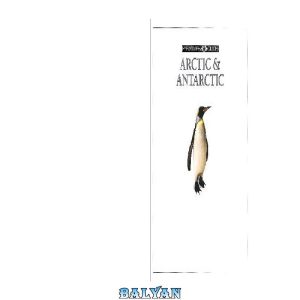ترجمه فارسی توضیحات (ترجمه ماشینی)
فیلژئوگرافی پناهگاه اروپای جنوبی: دیدگاه های تکاملی در مورد منشاء و حفاظت از تنوع زیستی اروپا
فیلژئوگرافی پناهگاه جنوب اروپا اولین ترکیبی از تنوع قابل توجه، پیچیدگی تکاملی و اهمیت حفاظت از گیاهان و جانوران در منطقه مدیترانه را با تأکید بر سه پناهگاه اصلی شبه جزیره ارائه می دهد. این کتاب تعدادی از مطالعات موردی را در چندین فصل مقدماتی و پایانی ارائه میکند که توسعه و اهمیت رویکردهای فیلوژئوگرافیک در زیستشناسی تکاملی را بررسی میکند. این کتاب با فصلی از پدر بنیانگذار این رشته، جان آویز، آغاز میشود که به بررسی 25 بینش تکاملی ناشی از انقلاب فیلژوگرافیک میپردازد. کلید این دیدگاه این تصور است که حوزه چند رشتهای فیلژئوگرافی به عنوان پل معرفتشناختی بین زمینههای متمایز قبلی ژنتیک جمعیت و فیلوژنتیک عمل میکند. در مرحله بعد، رامی پتیت و جیووانی وندرامین، برجستهترین رهبران فیلوژئوگرافی گیاهی در اروپا، مروری جامع و دقیق از تاریخچه ژنتیک اندامکهای گیاهی و کاربرد آنها در فیلژوگرافی ارائه میکنند. فصل پایانی مروری به روز در مورد اخطارها، چالش ها و چشم اندازهای آینده در فیلژئوگرافی به عنوان یک رشته ارائه می دهد. این جلد شامل مطالعات فیلژئوگرافیک در مقیاس وسیع و منطقه ای با داده های اصلی از طیف وسیعی از موجودات از جمله درختان، پستانداران، حشرات، ماهی ها، خزندگان و دوزیستان است. در سرتاسر این جلد، واضح است که مطالعات فیلژئوگرافیک، به ویژه در شبه جزیره های اصلی جنوب اروپا (ایبریا، ایتالیا، بالکان) بینش روشنگرانه ای را در مورد پیچیدگی تکاملی و اهمیت حفاظت از موجودات زنده که برجسته ترین پناهگاه های یخچالی اروپا را اشغال کرده اند، ارائه کرده است.
Phylogeography of Southern European Refugia provides the first synthesis of the remarkable diversity, evolutionary complexity, and conservation importance of the flora and fauna in the Mediterranean region, with emphasis on the three major peninsular refugia. The book frames a number of case studies within several introductory and closing chapters that review the development and importance of phylogeographic approaches in evolutionary biology. The book opens with a chapter by the fields founding father, John Avise, reviewing the 25 evolutionary insights that have arisen from the phylogeographic revolution. Key to this perspective is the notion that the multidisciplinary field of phylogeography is serving as an epistemological bridge between the formerly distinct fields of population genetics and phylogenetics. Next, the foremost leaders of plant phylogeography in Europe, Rémy Petit and Giovanni Vendramin provide an extraordinarily comprehensive and studious review of the history of plant organelle genetics and their application in phylogeography. A closing chapter provides an up-to-date review of the caveats, challenges, and future prospects in phylogeography as a discipline. The volume contains both broad scale and regional phylogeographic studies with original data from a range of organisms including trees, mammals, insects, fish, reptiles, and amphibians. Throughout the volume it is clear that phylogeographic studies, especially in the major peninsulas of southern Europe (Iberia, Italy, the Balkans) have provided enlightening insights into the evolutionary complexity and conservation importance of biota occupying Europes most prominent glacial refugia.












نقد و بررسیها
هنوز بررسیای ثبت نشده است.